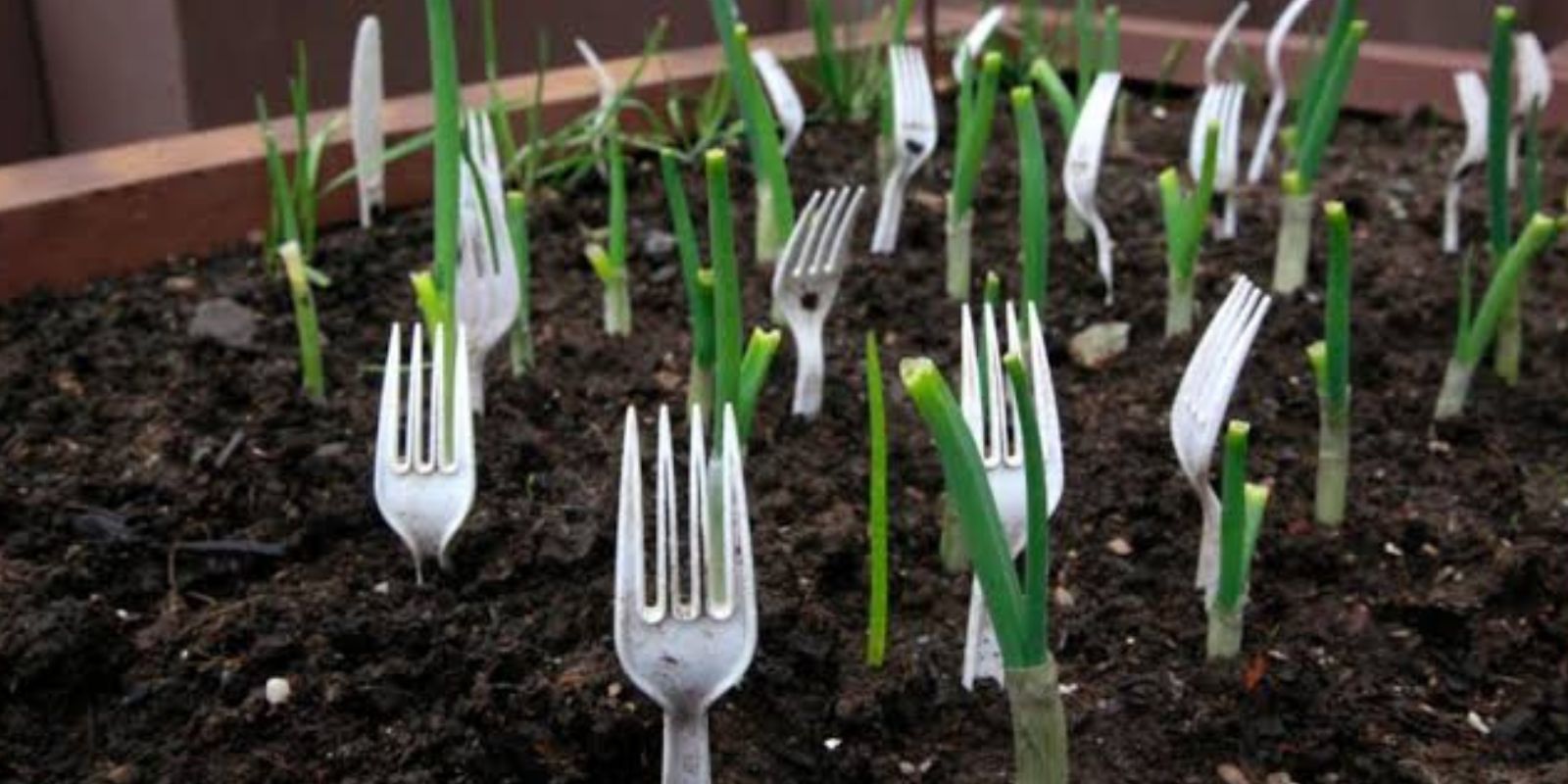Gardening is a rewarding hobby, but it comes with its fair share of challenges—especially when neighborhood cats decide to use your garden beds as their personal litter box. Many gardeners struggle with this issue, trying everything from sprays to barriers, only to find that the feline visitors return again and again.
But what if there was a simple, inexpensive, and effective way to keep cats away from your plants? Enter the plastic fork hack—a surprising but effective method that many gardeners swear by!
In this article, we’ll dive into why plastic forks work, how to use them properly, and other creative ways to protect your garden from unwanted four-legged visitors.
Why Do Cats Love Gardens?
Before we get into the plastic fork trick, it’s important to understand why cats are attracted to gardens in the first place.
✔ Soft, Loose Soil – Gardens provide the perfect texture for digging and burying waste.
✔ Freshly Turned Earth – Newly tilled or mulched soil is especially inviting.
✔ The Smell of Fertilizer – Organic fertilizers, especially those made from fish or bone meal, can attract cats.
✔ Warm, Sunny Spots – Raised beds and pots often absorb heat, making them cozy resting places.
✔ Hunting Grounds – If your garden has a lot of insects, birds, or small rodents, it may be a hunting spot for local cats.
While cats are wonderful companions, their presence in a garden can be damaging—they may dig up seedlings, use garden beds as litter boxes, and even eat or damage plants.
How Plastic Forks Can Help Keep Cats Out
Plastic forks may not seem like a typical gardening tool, but they work surprisingly well as a humane deterrent for cats.
✔ Creates an Uncomfortable Barrier – Cats dislike walking on spiky or uneven surfaces.
✔ Prevents Digging – The upright forks make it difficult for cats to dig in the soil.
✔ Doesn’t Harm the Cats – Unlike some deterrents, plastic forks don’t pose a risk to animals.
✔ Cheap and Easy to Use – You don’t need expensive repellents or fencing—just some plastic forks!
By sticking plastic forks into the soil, you create an unpleasant but harmless obstacle that discourages cats from entering your garden.
How to Use Plastic Forks in Your Garden
Now that you know why this method works, let’s go over the steps to properly use plastic forks in your garden for maximum effectiveness.
1. Gather Your Supplies
You’ll need:
✔ A pack of plastic forks (white or clear ones work best for blending in).
✔ A small garden trowel (if needed for inserting forks into tough soil).
✔ Optional: Mulch or gravel for extra protection.
2. Insert Forks into the Soil
✔ Place forks upright, with the tines pointing toward the sky.
✔ Space them 3-5 inches apart to create an effective deterrent.
✔ If you have a larger area, use more forks to cover the entire garden bed.
3. Cover with Mulch (Optional)
✔ If you prefer a more natural look, you can sprinkle mulch, leaves, or straw over the soil.
✔ The forks will still work as a barrier, but they won’t be as visible.
4. Monitor and Adjust
✔ Check your garden regularly to ensure the forks remain in place.
✔ If cats continue to visit, try adding more forks or repositioning them.
By following these steps, you can create a cat-proof garden without harming any animals!
Other Creative Ways to Keep Cats Out of Your Garden
While plastic forks are a great option, there are other methods you can try to keep cats away from your garden.
1. Use Citrus Peels 🍊
Cats dislike the smell of citrus, so scattering orange, lemon, or lime peels around your plants can act as a natural repellent.
2. Plant Cat-Repellent Herbs 🌿
Some plants naturally deter cats, including:
✔ Lavender – Beautiful and fragrant, but cats avoid it.
✔ Rosemary – Strong scent discourages cats from digging.
✔ Rue – Historically used to keep animals out of gardens.
3. Coffee Grounds & Pepper ☕🌶
Sprinkling used coffee grounds or crushed black pepper can help deter cats. However, avoid using too much, as some substances in coffee can be toxic to animals.
4. Motion-Activated Sprinklers 🚰
A motion-activated sprinkler startles cats and discourages them from returning. These are especially useful for large gardens.
5. DIY Chicken Wire Barrier 🛠
Laying chicken wire flat on the soil before planting makes it uncomfortable for cats to dig.
By combining these methods with the plastic fork trick, you can create a multi-layered defense against unwanted feline visitors!
Common Questions About Using Plastic Forks in the Garden
1. Will the forks damage my plants?
No! Plastic forks don’t interfere with plant growth if placed correctly. They only deter digging.
2. Will plastic forks work for other animals?
Yes! Forks can also help deter squirrels, rabbits, and raccoons from digging up seedlings.
3. Do I need to replace the forks often?
Not usually, but if they break or get displaced, simply add new ones.
4. Are there eco-friendly alternatives to plastic forks?
✔ Wooden chopsticks or sticks can work similarly.
✔ Biodegradable utensils are a more sustainable option.
Final Thoughts: Simple, Effective, and Humane
Using plastic forks in the garden is an unexpected but highly effective trick to keep cats and other animals from digging up your plants. It’s a budget-friendly, easy-to-implement solution that doesn’t require harmful chemicals or expensive fencing.
With a little creativity and patience, you can protect your garden while keeping it safe for both your plants and the local wildlife.
Have you tried the plastic fork trick? Share your experience in the comments and tag a fellow gardener who might find this tip useful! 🌱🐾

